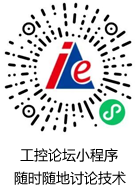等离子体的处理 点击:932 | 回复:0
发表于:2005-12-09 11:20:00
楼主
accelerating performance requirements
are driving the demand for highspeed,
multilayer PCBs. Traditional manufacturing
methods for laminating these layered
boards and removing residue from the vias
are no longer effective. The use of radio
frequency driven, low-pressure plasma provides
an efficient, cost-effective and environmentally
friendly method for surface treatment
and cleaning of the boards. Specific
applications of plasma technology to PCB
manufacturing, critical parameters, and
process examples will be discussed.
Innovations in PCB material technology
and the use of smaller geometries have led to
an increased requirement for plasma processing
at multiple steps in the manufacturing
cycle. Multilayer PCBs with high-density
interconnects require designs with finer
pitch, smaller vias, and the use of new material
technologies with high glass transition
temperatures and low loss factors. While
these materials solve coefficient of thermal
expansion (CTE) and speed issues, difficulties
arise during board manufacturing where
the use of traditional processes is limited.
Chemical processing with permanganate
chemistry is limited due to the inability of
the fluid to penetrate the small vias found in
multilayer PCBs. In addition, permanganate
does not effectively clean the very small via
holes that are usually located at the inner
layer level of laser-drilled via holes. Other wet
chemistries, such as acid etch, have difficulties
etching polyimide dielectric materials.
Plasma processing overcomes these limitations
due to the inherent penetrating
nature of plasma and the ability to precisely
control the process. Plasma can etch highaspect
ratio vias, and is environmentally
benign with a low cost of ownership.
Complex and sophisticated boards with
ever increasing layer counts and circuit
densities need the benefits of plasma for
descum, desmear/carbon removal, etchback,
Teflon® activation, and surface preparation.
Examples include: multilayer boards with
6 to 64 or more inner layers; boards with
high-aspect ratio
holes; PCBs with
m i c r o v i a s ,
b u r i e d v i a s ,
blind vias, and
laser formed
vias; and those
PCBs manufactured
from new
types of resin,
Teflon®-based
materials, and
chemically inert
materials.
What is Plasma?
Plasma is an electrically neutral mixture
of physically and chemically active gas phase
species including ions, radicals, and reaction
by-products. These active gas phase species
can perform numerous surface modification
processes including surface activation, contamination
removal, cross-linking, and etch
(Ref. 1). The type of plasma process is determined
by the PCB material type and post
process requirements, and is controlled by
the plasma conditions.
Typical plasma equipment consists of four
major components: the vacuum chamber,
electrodes, vacuum pump and an RF power
supply (see Figure 1). For PCB applications,
the PCB panels are suspended between a pair
Plasma Processes
for Printed Circuit Board Manufacturing
By Lou Fierro and James D. Getty
Figure 1. Plasma Treatment System Diagram.
A
New technology, high-performance boards require
the use of plasma in numerous manufacturing steps.
of electrodes located within the vacuum
chamber. A vacuum pumping system, such
as a rotary vane pump and roots blower, is
utilized to maintain a plasma process pressure
in the low milliTorr range. Source gases
are introduced through mass flow controllers
at a specified flow rate. Once the
desired process pressure is achieved, RF
power is applied to the electrodes thereby
initiating the plasma process.
The process gas is ionized and dissociated
through the application of RF energy.
Typically the RF generators operate in the
kHz to MHz range. The processes described
later in this article utilized a 40 kHz power
supply. Plasma-generated active species perform
both physical and chemical processes
through ion bombardm
热门招聘
相关主题
- 免费寄资料了
 [2817]
[2817] - ETD790全数字直流调速器的应...
 [2546]
[2546] - 分享书籍《PLC现场工程师工作...
 [4589]
[4589] - citect通信资料放送
 [3650]
[3650] - 谁想要和利时的培训资料
 [6837]
[6837] - 新书推荐:《施耐德电气SoMach...
 [3668]
[3668] - 继电保护技术规程GB14285-20...
 [2577]
[2577] - 免费赠送:《无线数据传输系列...
 [7019]
[7019] - 各种西门子plc资料,百度云盘...
 [5072]
[5072] - 我寻求三洋R系列驱动器说明书...
 [6049]
[6049]

官方公众号

智造工程师
-

 客服
客服

-

 小程序
小程序

-

 公众号
公众号

















 工控网智造工程师好文精选
工控网智造工程师好文精选
